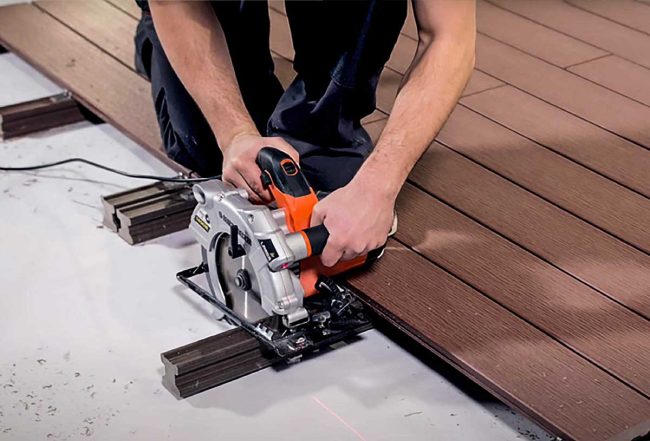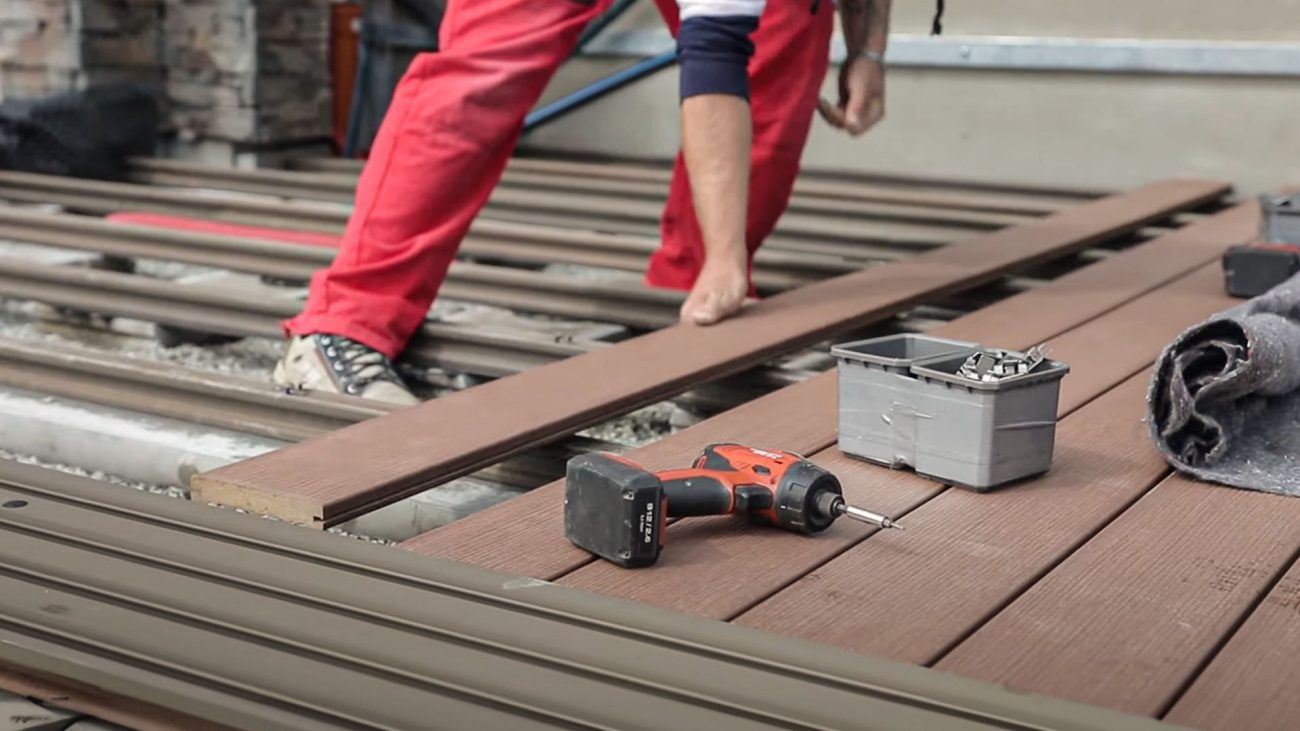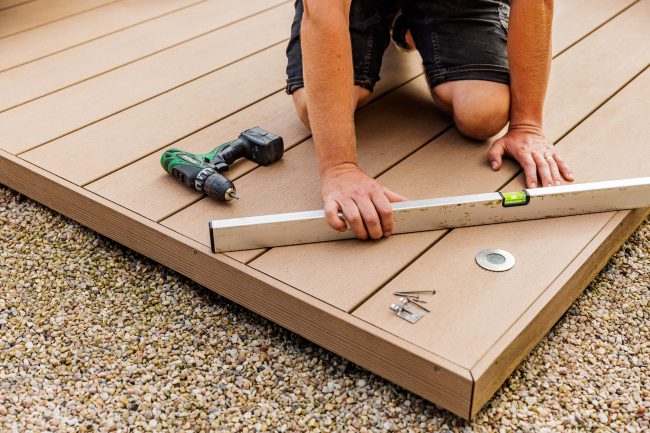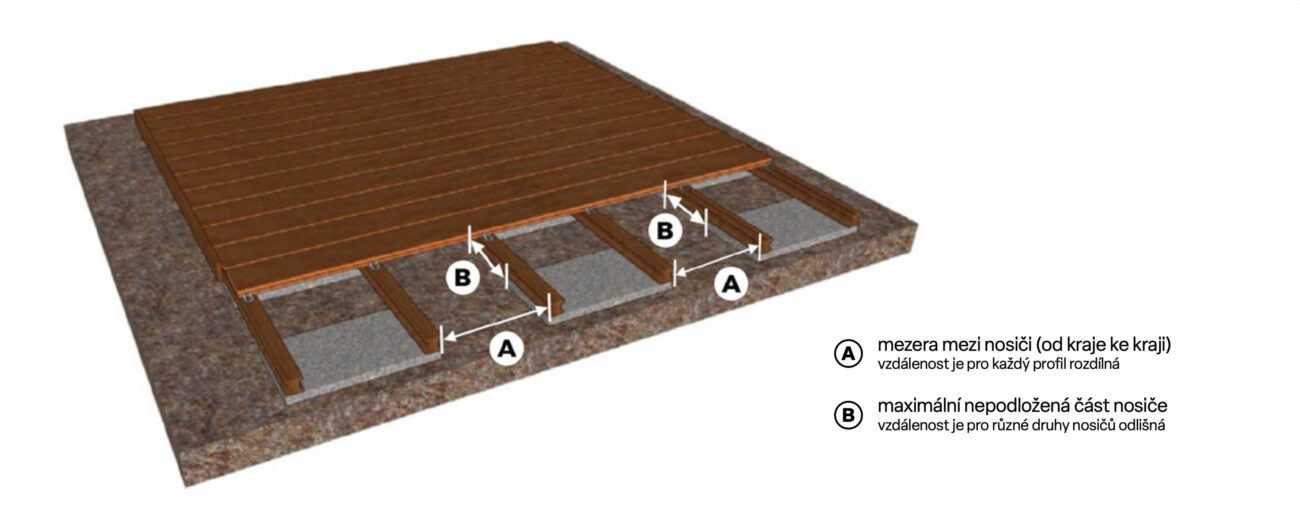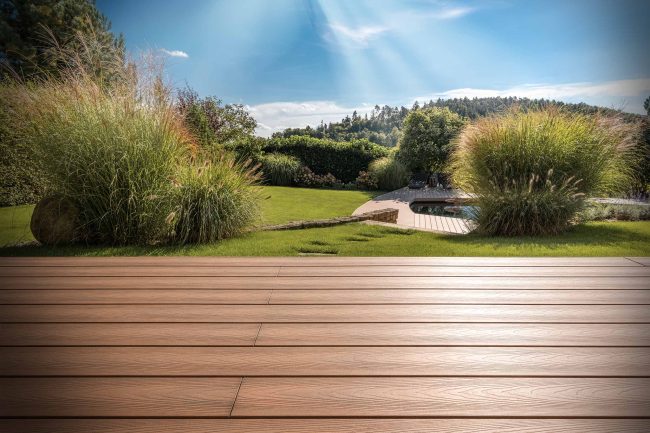Try to avoid soiling and scratching the boards of the already laid decking with improperly placed tools, building material etc. This will save you time with subsequent cleaning. When marking the cuts, use a pencil or a marker which can be easily removed from the surface afterwards.
If there are longer time intervals between laying of different parts of the decking, allow for subsequent colour difference between those parts which may even out during the entire time of the decking maturing.
The Terafest® joists are freely laid on the subsurface with the groove up, smooth side down. They do not need to be anchored or embedded in the concrete. The maximum distance (gap) between the joists (A), Fig. 2, is shown in Tab. 1. When combining several board profiles with different spacing of the joists, the lower value is always chosen. Never exceed the shown values, otherwise no claim can be accepted.
Leave an expansion gap of min. 10 mm between two adjacent joists and an expansion and ventilation gap (C) of at least 10 mm between the joist and the wall or another firm barrier (see Fig. 2 and Tab. 2). Use levelling pads or rectification pedestals to compensate for any height differences under the joists.
The unsupported part of the Terafest® 50×50 joist can be at most 300 mm long. Overhangs without support may be at most 50 mm long. The unsupported part of the lowered joist Terafest® 50×30 can be at most 150 mm long. The overhangs without support may be at most 30 mm long.
Whenever possible, cut the joists to required length only before laying the last row of boards.
Composite boards usually require no grading, however, grading them slightly at 1 cm per 1 meter of length improves the self-cleaning effect, the decking dries quicker and the occurrence of water dusts spots is reduced.
The shapeability of our composite is one of its unquestionable advantages. As opposed to the WPC materials which contain, for instance, PVC, the Terafest® boards can be bent by heat. This proves to be a great advantage, for example, for pool decks which are circular or drop-shaped.
